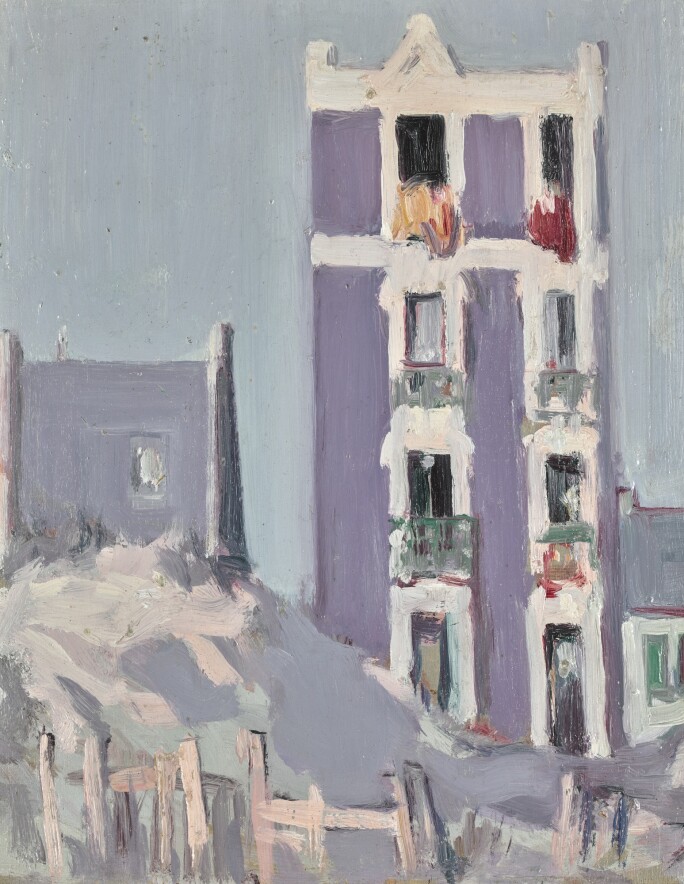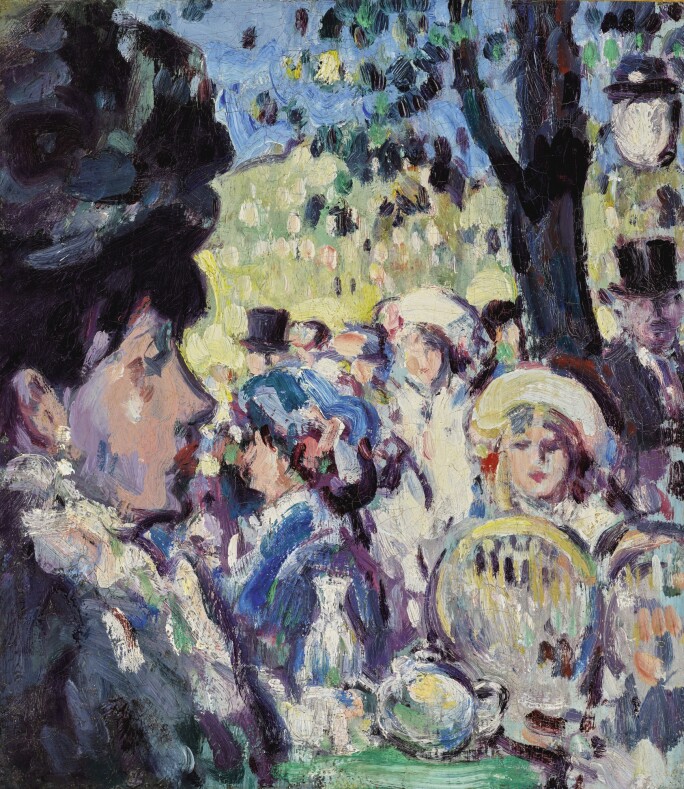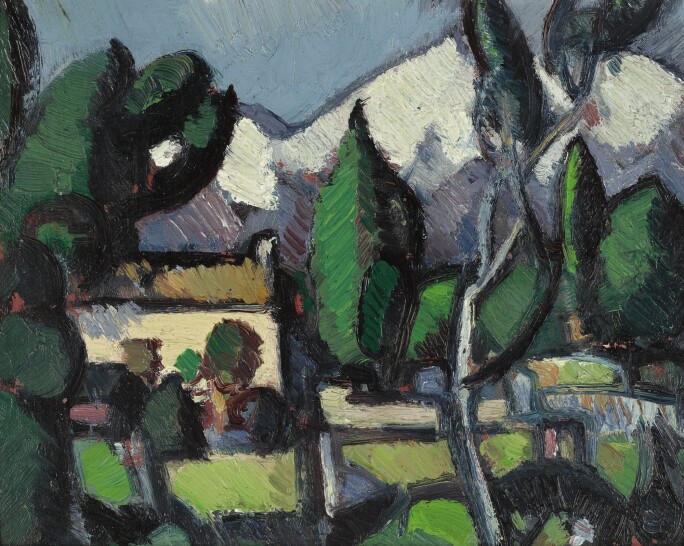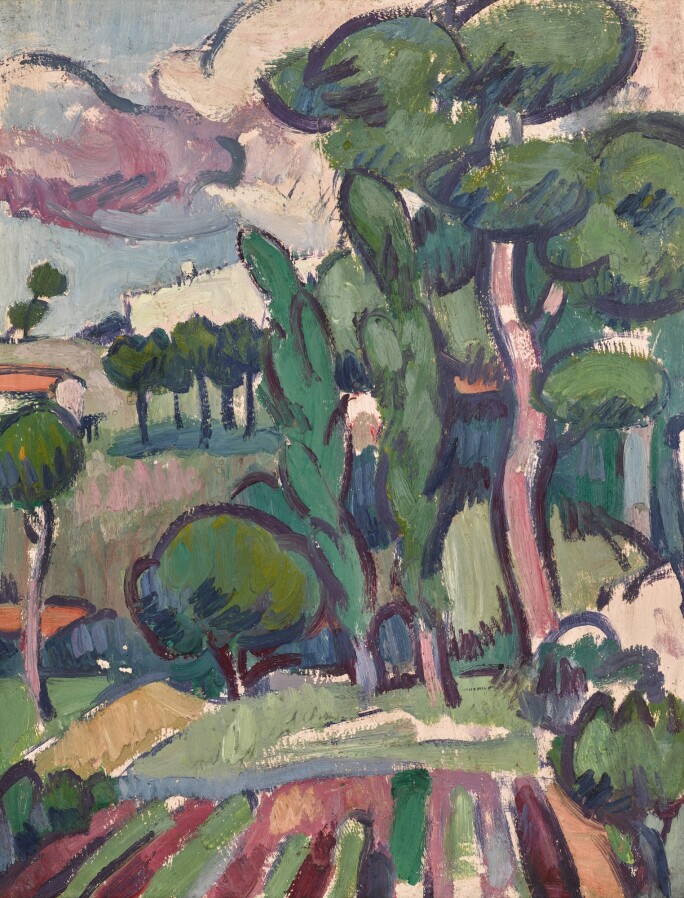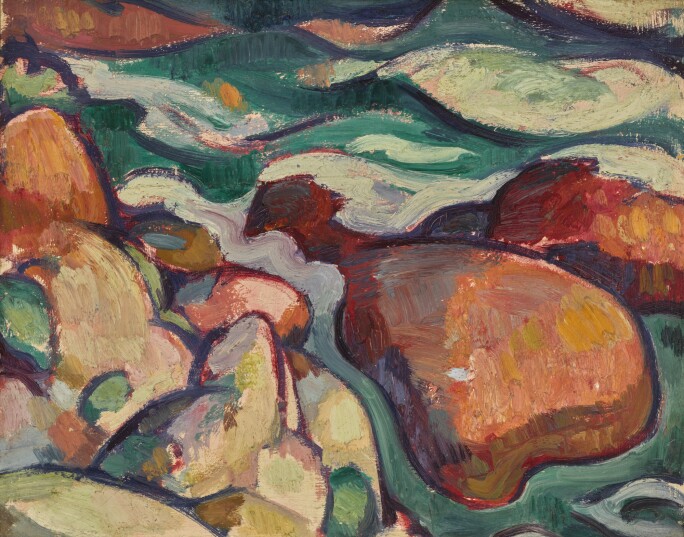S otheby’s Scottish Art sale on 20 November 2018 includes a number of important works by John Duncan Fergusson (1874 -1961) and Anne Estelle Rice (1877-1959). The paintings of both artists are dominated by brilliant colour, bold lines and simplified forms executed in energetic brush strokes. These similarities are explained by the romantic and professional relationship which blossomed between Fergusson and Rice from their first meeting in France in 1907 until around 1912. During their relationship Fergusson became a powerful influence on Rice’s artistic development.
Fergusson was born near Edinburgh in 1874 but became fascinated by the avant-garde developments of French painting and the artistic milieu of Paris. Whilst Fergusson gained experience and inspiration in Paris, his early artistic success was achieved back at home in Scotland. He had his first studio in Edinburgh from 1902 and is known as one of the Scottish Colourists, a group of painters united by their passion for colour and their engagement with the artistic innovations made by the Impressionists and the Fauvists.
In the sale we are pleased to present two paintings which demonstrate Fergusson’s early artistic style. Both Paris Plage, 1902 and Paris Plage, 1904 are beautiful examples of the softer colour palette and fluid impressionistic brushstrokes which Fergusson used before his move to Paris in 1907.
After his early success in Scotland, Fergusson relocated to Paris, a move which marks a turning point in his artistic development. In the same year that he moved to Paris he painted The Open Air Fête, Armenonville. This painting marks a pivotal point in Fergusson’s career, combining the influence of both the Impressionists and the confident, bold lines and colours of the Fauvists. The elegantly dressed woman in the foreground is thought to be based upon sketches of Rice which would have been made in the early days of their relationship.
Rice was born and educated in Pennsylvania but her artistic career took flight after her entry into Paris’s thriving artistic community in 1906. During her relationship with Fergusson, Rice began to produce paintings in which nature was represented through geometric forms and intense blocks of colour. Her unrestrained depictions of landscapes and cityscapes reflect Fergusson’s exuberant use of colour and confidently simple forms.
Fergusson’s Alpes Maritimes is a significant example of his ability to transform nature and cityscapes into works of vibrant colour, simplified forms and bold lines. Fergusson encouraged his students ‘to see rhythm in nature’ (A. Strange, E. Cumming and S. McGregor, J. D. Fergusson Edinburgh, 2013, p. 57). He was clearly offering advice from his own artistic practices, and passed the search for rhythm onto Rice who certainly followed similar principles in her own work.
The four paintings by Rice coming up in our Scottish Art Sale demonstrate Rice’s unique reaction to the influences surrounding her. The paintings’ vibrant colour palette and thick contour lines are the combined results of her exposure to French Modernism and to Fergusson’s ideals. Tall Trees and In the Valley are typical of Rice’s talent for transforming nature into a joyful celebration of colour and form, outlined in energetic strokes of paint.
Likewise, in Pink House the energy and force of Rice’s brushstrokes compliment her consistent use of blocks of pink and green throughout the painting. Stylistically the painting is very similar to works painted at this time by Fergusson and his fellow Colourist Samuel John Peploe, but the work showcases Rice’s successful absorption of the many sources of inspiration which she encountered into her own vibrant artistic vision.
Rice’s talent for processing external influences and producing works which display her own personal characteristics is seen once again in Whale Rock. The rocks’ naturally unobtrusive forms have been abstracted and simplified to create an expressively colourful representation of the scene.
The works which we have coming up in our Scottish Art sale are significant examples of the extraordinary collection of paintings produced by Fergusson and Rice. The paintings pay tribute to both artists’ powerful fusion of the ideals of the Scottish Colourists and the innovations of French Modernism.



